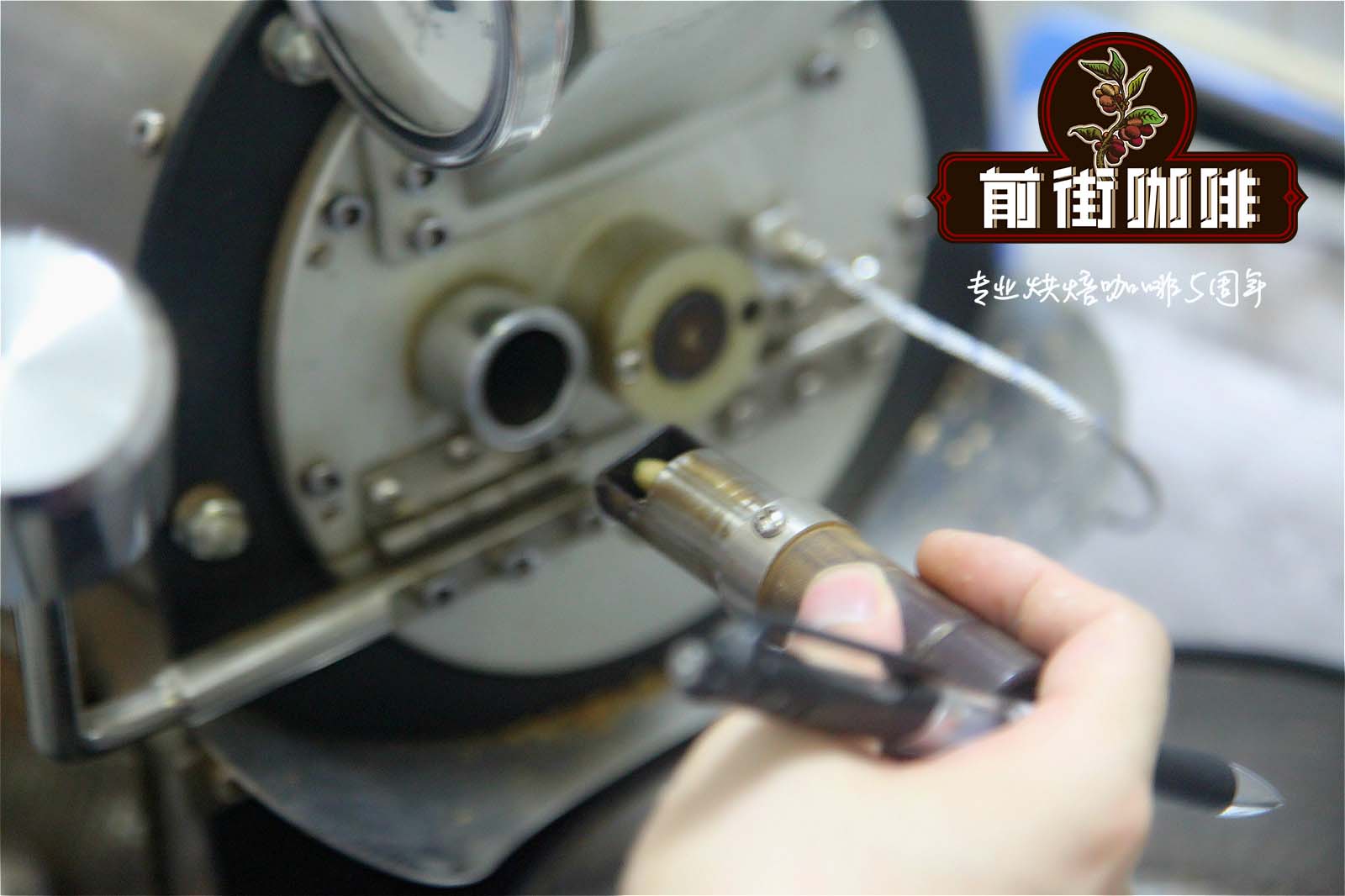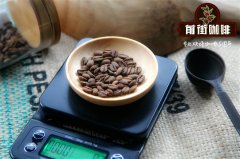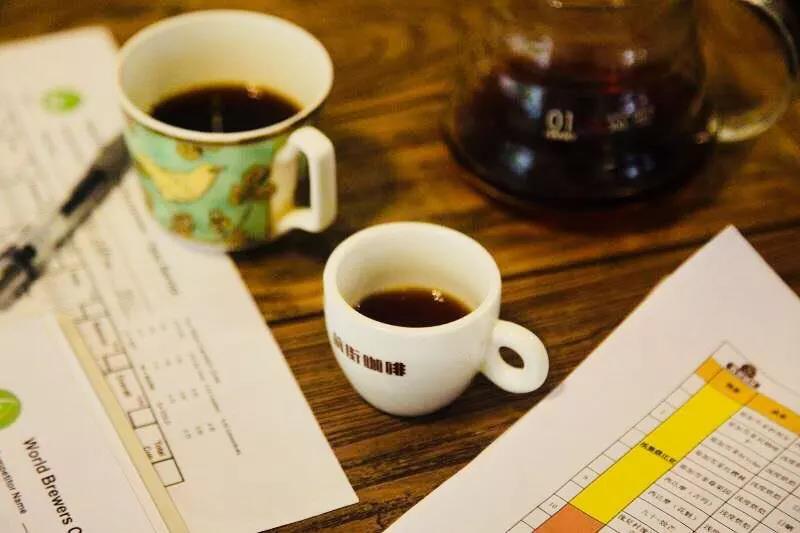How to bake sun-cured coffee _ changes of sun-cured coffee beans during baking _ recommended

Professional coffee knowledge exchange more coffee bean information please follow the coffee workshop (Wechat official account cafe_style)
Roasted sun-dried coffee beans
* slightly open the air door before 120 ℃ (slightly smaller than water-washed beans), because the sun-dried beans tend to be woody and the silver skin is not easy to peel off. Steaming coffee beans makes moisture increase the maturity of beans and reduce dryness. Keep beans with more moisture at 150 ℃, which is easy to steam beans.
* 120MUMUR 168 ℃ opens about 3thumb 4 throttle (about 1x2 for washed beans) so that the moisture in the original bean body evaporates rapidly. If the temperature rises too fast, you need to adjust the firepower to delay the heating time.
* 168 MULLI 198 ℃ maintain normal continuous firepower heating mode about 12 minutes to about 198 Mel 200 ℃ before the explosion a small fire drop about 30 seconds
* 215 Mel 222 ℃ is about the period of an explosion. After 30 seconds, depending on the situation, if the burst sound is too urgent and too strong, you should immediately turn off the engine and glide to the end of the explosion. If you can hear the burst sound sparsely in about 1 minute, you can drop the beans.
* after putting the beans, rub the cooked beans in a mesh basket to remove the silver peel and carbon shavings of the coffee beans, and then pick out the white beans and the flavor will be much cleaner.
● sun-cured coffee beans, soft beans or low-altitude beans change similarly during baking, and I put them into the same group. Sun-dried beans are treated for a longer time than washed beans, and the relative moisture content is relatively low, especially in the part of the bean surface, so the dehydration of the bean surface (the whole bean turns white) is easy to make during baking. The following group of photos are Tchembe produced by Ninety plus, which belongs to slightly fermented sun beans. I don't have to say that they are famous beans. You can find them on the Internet.
The characteristic of sun-cured coffee beans is that their surface (at least) has a lower moisture content compared with water-washed beans, so it is easy to produce white spots on the surface and spread to the whole bean during the steaming period. as shown below-the beans turn white when they are steamed at 127 degrees, it can be seen from the section that only the core of the beans is left at this stage with relatively high water content and still a little green.
After the completion of steaming, the surface of the bean will begin to enter the Mena reaction period, and the initial yellowish reaction will occur on the bean surface. Because the dehydration of the bean surface is very uniform, the color of the whole bean is also quite uniform, and a little green can still be seen from the profile.
When the bean temperature is 160C, the Mena reaction of the bean table enters a peak period. Due to the proper steaming treatment, the color of the whole bean is quite uniform, and the original green of the bean core also begins to turn yellow, which means that the bean core is also carrying out the Mena reaction.
At 172 degrees, the brown reaction of the beans is quite average, and the internal color gradually deepens, when the beans will show the smell of popcorn or toast, representing the extreme Mena reaction, commonly known as dehydration. However, the sun-dried beans are dehydrated enough, so the dark wrinkles in the areas where the dehydration is insufficient are almost invisible. If the beans are washed, the wrinkles on the bean surface are quite obvious at this stage. In order to prevent the next caramel reaction from going wrong, I will turn off the fire and wind here to avoid "excessive" heating (which does not mean cooling), resulting in the next excessive caramel smell. But I don't think caramelization has officially begun at this stage.
An explosion: it starts to explode at 186 degrees. At this time, the sound you hear is only a few of the many beans. The rest should belong to the state before the explosion. Their stomachs should be full of moisture and ready to explode. Mena's reaction is coming to an end. If you put beans at this time, you will drink a lot of aroma, sucrose sweet (simple sweet, non-caramelized sweet). But if you don't handle it well, it's easy to drink grass and astringency, and your mouth and your stomach will cover it.
After a dense explosion: more than half of the beans are developed and exploded, and the water accumulated in the bean core is also fully removed. 1% of the water can be drained from the beginning of the explosion to the end of the explosion. This is the most vigorous period for bean drainage. If the moisture content is measured, only 1% is left, water activity aw=0.2, in short, beans do not have free water. But it should be noted that if you want to continue baking until the second explosion, you have to find a way to leave a little water to bring in, otherwise, the free water is gone, then the bond water suffers, and finally there is no water, which will scorch until the consequences of the second explosion are unbearable.
Then how to leave water into the second explosion? I'm sorry that the second explosion is not my field at the moment, and I can't answer it, but I'm pretty sure that the whole technique should be changed, and the concept of prolonging the time after the first explosion should never be used to bake the beans after the first explosion. it will die ugly, because you will get a very bitter taste.
I know that some experts in baking beans will come faster than baking, of course, the method is different, I believe they are also considering the moisture and bitterness after the explosion.
In addition, there is an obvious difference in the changes inside the beans from before to after the explosion. At 186 degrees, the outer edge of the bean is darker and the core is lighter, but after the explosion, on the contrary, the inner color is darker, and I am still exploring this phenomenon. But I know that the bean core is caramelizing at this time.
●, what I found:
As long as the beans produce white spots during the steaming period, it represents the rapid loss of water in this part. When I sliced this part, this part is quite crisp and the color is relatively light (light).
The beans are steaming the parts where there are no white spots. When I was slicing, this part was quite tough. It took a little effort to cut, and the color was dark during the Mena reaction period. After the completion of dehydration, this part will form a strong contrast with the faster dehydration area, forming distinct wrinkles, commonly known as bean shrinkage point.
Therefore: the leukoplakia area will then fade and the structure will become brittle during the Mena reaction period, and the Mena reaction at this time is not complete. What for? The reason is that because the leukoplakia is dehydrated too quickly, the temperature of the Mena reaction period is up but there is not enough water to provide, so the reaction is incomplete, the color is light and the aroma is weak.
●, it's not good to have leukoplakia in that way. Excessive dehydration on the surface contributes to the formation of the internal Mena reaction.
I think the white spot on the surface of the bean because of the crisp structure can create a ventilation channel to help the moisture inside the bean to disperse. The focus of the whole baking is to make the beans fully ripe, and the generation of white spots helps to bake the beans thoroughly, because after the formation of a drainage channel, with an appropriate heating rate, it can help the internal temperature of the beans to reach the Mena reaction period, and help the moisture to be properly reduced to aw=0.7.
Of course, if the internal moisture is too high or too low will produce undesirable results. So this manipulation (wind and fire configuration, heating rate) to mix dehydration, the internal temperature of beans, is an art.
What is the condition if there are too few white spots on the surface of beans?
That means that the surface dehydration is appropriate or insufficient. At this time, in the Mena reaction period, because there is enough water, a good Mena reaction can be formed, but because the structure is tough and can not form a crisp dehydration channel, so the water inside the beans will accumulate in it and cannot be discharged. Once the Mena reaction temperature, water is too high, it will start the chlorogenic acid hydrolysis reaction, will produce a bad sense of bitterness (vinyl catechol polymer). That's what people call dehydration deficiency.
Brand recommendation of ● sun-cured coffee beans
Qianjie Coffee freshly roasted single-product sun-baked coffee beans-such as Sun Yega Chevrolet and Sun West Dharma Coffee are fully guaranteed in brand and quality and are suitable for brewing in a variety of utensils. And more importantly, the performance-to-price ratio is extremely high, a bag of half a pound 227 grams, the price is only 70-90 yuan. According to the calculation of 200ml per cup of coffee and the ratio of powder to water at 1:15, 15 cups of fine coffee can be made in a bag, and each cup of coffee only costs about 5 or 6 yuan, which is very cost-effective for cafes to sell dozens of yuan a cup. Sun-dried coffee beans
Qianjie coffee: Guangzhou bakery, the store is small but a variety of beans, you can find a variety of unknown beans, but also provide online store services. Https://shop104210103.taobao.com
Important Notice :
前街咖啡 FrontStreet Coffee has moved to new addredd:
FrontStreet Coffee Address: 315,Donghua East Road,GuangZhou
Tel:020 38364473
- Prev

Sun-dried Ethiopian coffee beans are recommended. Are sun-dried coffee beans easier to bake? Price of sun-cured coffee
Professional coffee knowledge exchange more information on coffee beans Please follow the coffee workshop (Wechat official account cafe_style) sun-dried coffee beans. To put it simply, coffee cherries are dried with pulp and peel, so they are called Nature in English. However, this nature treatment seems easy but not easy. He has also made some efforts in his diligence. ● Commercial Sun Coffee
- Next

[Qianjie barista examination] check Qianjie irregularly for exams.
Professional coffee knowledge exchange more coffee bean information please follow the coffee workshop (Wechat official account cafe_style) [preface] I believe some friends have found that we have random tests on the front street from time to time, why do we want to take the exam? In addition to testing our familiarity with beans, it is more important to show you a good cup of coffee and enjoy the taste and story of a cup of coffee.
Related
- What is the meaning of lactic acid fermentation with coffee bean treatment?
- How to judge the state of foam by sound?
- How does the latte pull out the unicorn pattern? Come to get for a little trick to improve the flower pull!
- Will flower pulling affect the taste of the latte?
- Do you know the history of coffee?
- The difference between honey treatment and sun washing what is raisin honey treatment?
- What kind of milk can a novice use to make coffee foam to keep the foam longer? The correct method and skills of milking tutorial sharing
- Why do washed coffee beans taste sour? Flavor characteristics of washed Coffee
- Introduction to the skill of how to practice the size and height of water injection around the circle of hand-brewed coffee
- How do beginners practice coffee flower drawing from scratch?

